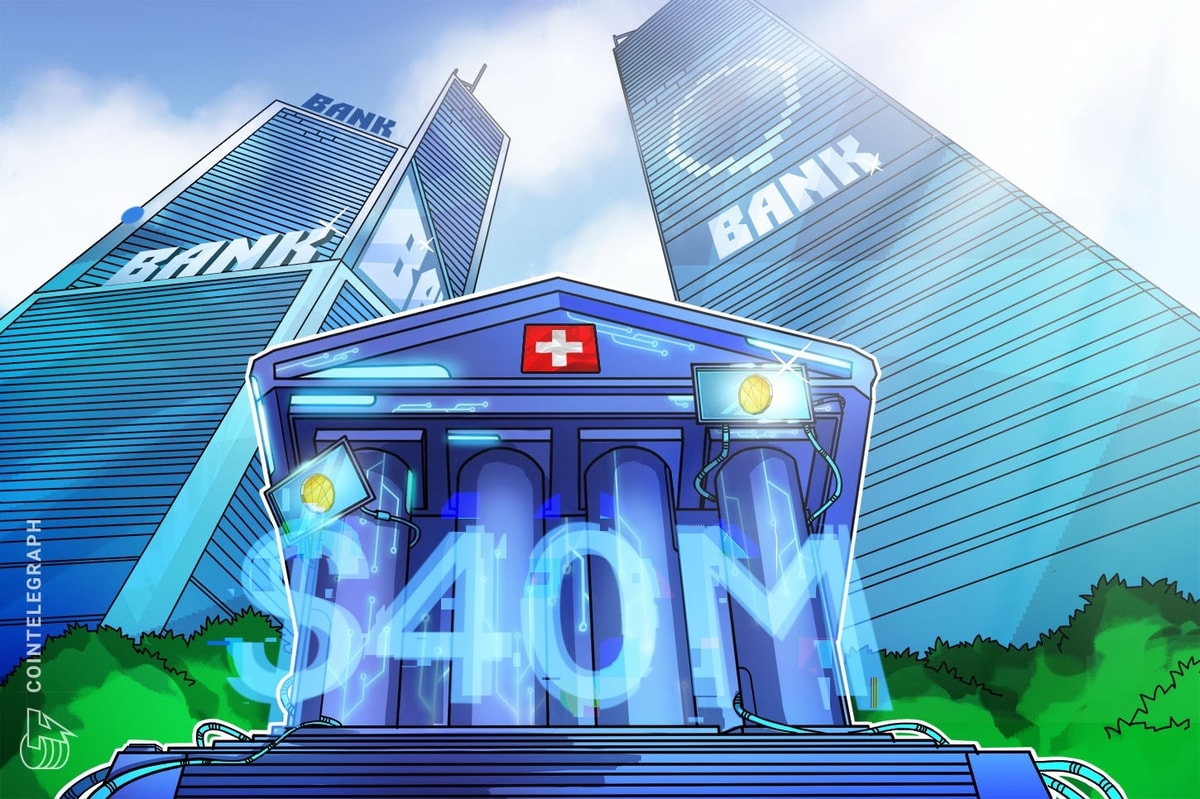The cryptocurrency market is melting down. But it’s also in the deep freeze of this year’s crypto winter.
November was a catastrophic month for crypto, even by its own volatile standards. FTX, one of the biggest and fastest crypto exchanges in the world, rocked the crypto world to its core when it filed for bankruptcy Nov. 11. Bitcoin’s price dropped from over $20,000 to under $16,000 in a matter of days, and it still hasn’t recovered. Ethereum saw a similar decline, falling from above $1,600 to below $1,200 as the drama unfolded.
And the fallout isn’t done yet.
FTX’s implosion seems to have been only the beginning, with BlockFi filing for bankruptcy earlier this week. Other crypto entities, including major lenders like Genesis Global Trading, are trying to stay afloat and avoid their own bankruptcies.
“They’re all intertwined, because there’s a lot of connectivity in the DeFi space,” said Chris Kline, CRO and co-founder of Bitcoin IRA, a digital asset technology platform for individual retirement accounts. “It’s not a huge market yet so one affects the others.”
We’re just about a month out from this being the longest crypto bear market so far. Like prior crypto winters, today’s bear market is marked by price drops of nearly 80% since the previous all time high. But unlike prior winters, the economic circumstances surrounding the current market are much more fraught. Inflation is at historic highs, layoffs are increasing, and a potential recession may be headed our way. Moreover, mounting scrutiny over FTX’s bankruptcy is turning regulators’ eyes toward crypto more than ever.
For crypto investors looking for guidance, the question is: What do these bankruptcies mean for the crypto winter, which had already been holding prices down throughout the year?
What Is the Effect of FTX’s Collapse On Crypto Winter?
The collapse of FTX probably deepened the lows we’ve seen this year, Kline said, but it’s impossible to say with certainty whether it’ll prolong the current bear market.
Crypto prices had been on the rise before the fall of FTX: bitcoin was just reclaiming $20,000 while ethereum went above $1,600 for the first time in more than a month. But FTX’s bankruptcy, which came swiftly following a bombshell Coindesk report that was published on Nov. 2, pulled those prices down to fresh lows.
“FTX is a little different from the other bankruptcies in this space,” Kline said. “In my opinion, there’s much more probably malfeasance and fraud happening on the FTX side … I think it damaged the public’s trust.”
Crypto is a retail-driven asset class, so public trust is huge in this ecosystem. “The trust factor is going to be huge as we bring those participants back into the marketplace or into the marketplace for the first time,” Kline said.
What Will It Take For Crypto Winter to End?
Crypto prices are unlikely to see major recovery without new or returning investors bringing cash back into the market. But these recent bankruptcies aren’t the only reason crypto prices have fallen back down.
First was crypto’s crash during the summer when stablecoin terraUSD collapsed in May, bringing crypto token luna down with it. Then there was a string of bankruptcies of large lenders and hedge funds, including Three Arrows Capital, Celsius, and Voyager.
Tack poor macroeconomic headwinds to those failures and you have all the hallmarks of a downtrodden market.
Economic bombshell after bombshell dropped this year, which have continuously worked to depress crypto prices. An ongoing pandemic, geopolitical conflict in Europe, rampant inflation, and a potential recession are all macroeconomic headwinds that have caused markets to dip in 2022.
“All of these factors are just creating economic pressure, where it’s really difficult for crypto or any other risk asset to rebound,” said Charlene Fadirepo, Founder and CEO of Guidefi, a fintech platform that helps women and professionals of color find financial advisors.
Experts agree that economic pain points need to ease up in order for the crypto market to lift back up. From the perspective of your everyday investor, it’s really hard to invest in something so shaky right now.
“If Americans can’t pay for food, can’t pay for gas, are having trouble affording housing, we’re going to be less likely to put our money into speculative assets,” said crypto expert Wendy O, founder of CryptoWendyO media.
That means inflation needs to come down, and, after it does, the Federal Reserve needs to ease up on interest rates so the U.S. economy can flourish again. That’ll give investors more economic bandwidth to invest in riskier assets and promote the next crypto bull run.
When Will the Crypto Winter End?
No one can say for sure, but given the current economic trajectory and recent string of bankruptcies, experts don’t think it’ll end anytime soon. We’ll be here until at least mid-2023, and it’ll probably take more time than that to come out of this bear market, according to Fadirepo.
That said, there are similarities between this crypto winter and prior ones that point to 2024 as the next time this market might boost back up. Namely, the market seems to be repeating the same four-year cycle again and again.
“At the core, you have what has seemed to become the natural cycles of crypto,” Kline said. “It has large runs, it has large falls, it has winters, it has bull runs, and it’s shown this cycle three or four times now. That’s fundamentally how this asset class seems to behave as it’s emerging.”
Some experts say the next bitcoin halving will be a major upwards push. The bitcoin halving event, which takes place every four years, occurs when the reward for mining bitcoin transactions is cut in half. This reduces the rate at which new coins are created and, as a result, tends to push bitcoin’s price up. It’s not an exact science, but the current estimate is that the next halving will take place in early to mid-2024.
“People always joke that crypto has been announced dead a thousand times by the media, and every time it comes back” Kline said. “We’ll see all time highs again, this is crypto’s nature.”
What Should Crypto Investors Do Right Now?
Whether you’re a current investor or looking to get started with crypto, now is a good time to do some homework
FTX’s implosion highlights the risks of investing in the crypto market and serves as a good reminder to carefully read and understand the terms of service and user agreements of your exchange and your wallet.
If you don’t have a crypto wallet, now may be a good time to consider getting one. Cold wallets are usually the most secure option, as they hold your tokens on hardware that isn’t connected to the internet. In contrast, hot wallets are accessible online which means they’re more vulnerable to cyber attacks.
Experts recommend that you dedicate only 3-5% of our investing portfolio to crypto and to invest only what you’re OK with losing.
If you haven’t entered this market yet but are thinking about it, it’s a good time to get acquainted with the various ecosystems, the technology that powers crypto, and the new and exciting projects in the pipeline, including NFTs, web3 and the metaverse.
“It’s a fantastic time to take the time to invest in education and the space, to make sure you’re comfortable, and to decide what level of cryptocurrency investing is right for your financial situation and for your timeline,” Fadirepo said. “It’s a fantastic time to decide if bitcoin is right for you … bitcoin is on sale.”
Read More: news.google.com









 Bitcoin
Bitcoin  Ethereum
Ethereum  Tether
Tether  XRP
XRP  Solana
Solana  USDC
USDC  Dogecoin
Dogecoin  Cardano
Cardano  TRON
TRON  Lido Staked Ether
Lido Staked Ether  Wrapped Bitcoin
Wrapped Bitcoin  Sui
Sui  Hyperliquid
Hyperliquid  Wrapped stETH
Wrapped stETH  Chainlink
Chainlink  Avalanche
Avalanche  Stellar
Stellar  Shiba Inu
Shiba Inu  LEO Token
LEO Token  Bitcoin Cash
Bitcoin Cash  Toncoin
Toncoin  Hedera
Hedera  WETH
WETH  Litecoin
Litecoin  USDS
USDS  Polkadot
Polkadot  Wrapped eETH
Wrapped eETH  Monero
Monero  Bitget Token
Bitget Token  Binance Bridged USDT (BNB Smart Chain)
Binance Bridged USDT (BNB Smart Chain)  Pepe
Pepe  Pi Network
Pi Network  Ethena USDe
Ethena USDe  Coinbase Wrapped BTC
Coinbase Wrapped BTC  WhiteBIT Coin
WhiteBIT Coin  Uniswap
Uniswap  Aave
Aave  Bittensor
Bittensor  Dai
Dai  NEAR Protocol
NEAR Protocol  Aptos
Aptos  Jito Staked SOL
Jito Staked SOL  OKB
OKB  Tokenize Xchange
Tokenize Xchange  Ondo
Ondo  BlackRock USD Institutional Digital Liquidity Fund
BlackRock USD Institutional Digital Liquidity Fund  Cronos
Cronos  Ethereum Classic
Ethereum Classic  Internet Computer
Internet Computer